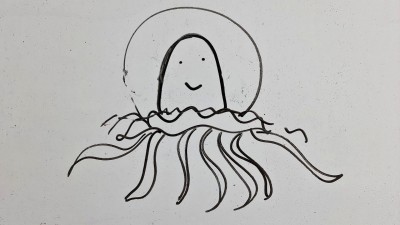Ask Singapore Homework?
Upload a photo of a Singapore homework and someone will email you the solution for free.

Question
secondary 4 | A Maths
One Answer Below
Anyone can contribute an answer, even non-tutors.

How to show
Now the part below the frustum is a smaller cone (height is from the tip to the bottom of the frustum) and it is geometrically similar to A. Call it B.
Letting the height of the cone B be y, and knowing that ratio of corresponding sides are equal,
Height of cone A / height of cone B = base radius of cone A / base radius of cone B
(y+1) / y = 2/1
y + 1 = 2y
y = 1
So height of cone A = 1 + 1 = 2 cm
Now we can actually visualise another cone (height from from the tip to the water's surface) which is also geometrically similar to the A. Let's call it C.
This cone has height of : y + x = 1 + x
Using the same idea of ratios of corresponding sides,
Height of cone A / height of cone C = base radius of cone A / base radius of cone C
2 / (1 + x) = 2 / base radius of cone C
base radius of cone C = 1 + x
Volume of water
= Volume of cone C - Volume of cone B
(Use the formula ⅓πr²h)
= ⅓π(1+x)²(1 + x) - ⅓π(1²)(1)
(Each cone's height equals its base radius so we could also rewrite it as ⅓πr³)
= ⅓π ( (1+x)³ - 1)
= ⅓π(1 + 3x + 3x² + x³ - 1)
= ⅓π(x³ + 3x² + 3x)
= π(⅓x³ + x² + x)
(Shown)
See 1 Answer





